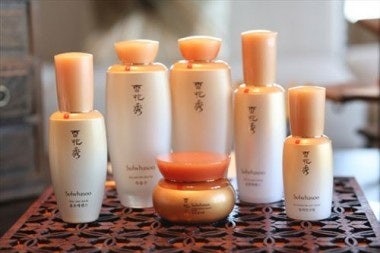With The Right Marketing Strategy, Osiao Could Expand Throughout Asia#

With 12 of its 28 brand offerings already selling in the Chinese market, American multi-brand cosmetic conglomerate
Estée Lauder#
will soon release a 13th brand exclusively for the Greater China market,
Osiao#
(“O-Shao”), its first premium Asian skincare range. In advance of its rollout in mainland China over the next two years, Osiao will debut in Hong Kong’s
Lane Crawford#
department stores in mid-October.
Streamlined to mainly focus on skincare, Osiao (which has been under wraps for four years) is specifically developed with the Chinese consumer in mind. Now the third largest regional market for the Estée Lauder group, having recently surpassed Japan, group chief executive Fabrizio Freda recently called China Estée Lauder's “second home market.” After an 8 percent decrease in total compensation from 2011 to 2012 and a decrease in international air passenger traffic this summer -- a damper on the 20 percent of operating earnings the group derives from duty-free shops -- Osiao has the potential to buoy Estée Lauder's fiscal year 2013 earnings.
Thinking further ahead, Freda has created an internal group called “China 2020” whose job is to ensure the company has the same level of management, local customer intelligence and operations in China as it does in the United States. With a restructuring program well underway, new product offerings and the potential to expand profit margins while driving strong revenue growth, researchers like Citi believe Estée Lauder remains an intriguing, "very good" long-term story.
While Osiao marks the beginning of Freda’s plan to further expand Estée Lauder's presence in China, the potential consumer reception and success of the brand remains purely speculative at this point. In the words of Connie Maneaty, an analyst with BMO Capital Markets, “the worst-case scenario is that [Osiao’s] a niche brand. The best case is that it becomes significant and expands throughout Asia over time.” To us, what will define the success of Osiao rests in a very fine balancing act between product quality and product promotion.
Considering the years of research that Estée Lauder's China-based research institutes (like those of competitor L’Oreal) have put into the project, which included extensive studies of different types of Asian skin types and tests on several thousand women in Hong Kong and mainland China, as well as Japan and Korea, there is little doubt that Osiao will offer a product that ostensibly appeals to the Chinese buyer and suits the Chinese complexion. Developed in Shanghai and manufactured in Japan, the New York Times noted this week that “the new skin care brand caters to the tastes of consumers in Asia...Osiao’s specialized formulas, for example, contain Chinese plants like ginseng.”

For the increasingly health-conscious Chinese consumer in particular, medicinal ingredients like the Asiatic Pennywort herb, ganoderm (a type of mushroom), and ginseng are familiar, and traditionally trustworthy, ingredients. However, Osiao won't be the only cosmetics maker in a very crowded and contentious market to use traditional Asian ingredients, joining brands like Korea's
Sulwhasoo#
and
AMOREPACIFIC#
, as well as China's
Shanghai VIVE#
and
BYKL#
, just to name a few.
As much as the brand may be -- on the surface -- a perfect match for the Chinese consumer, Osiao’s promotion and marketing strategies may put the brand at risk of being lost in translation. As Oru Mohiuddin, a senior personal care company analyst at Euromonitor International, cautioned, “This is going to be an interesting experiment. There could be a question of brand credibility.” That is to say, Osiao’s mission to appeal to the Chinese consumer may in fact go too far and be seen as pandering rather than clever promotion.
Considered “a modern mash-up of traditional Chinese medicine and the American science of marketing,” this hybrid brand is meant to combine Eastern remedies with the brand success and reputation of Estée Lauder. Efforts such as recreating in-store counters to echo traditional Chinese apothecaries, selecting a Sino-phonic name, and printing labels only in English may place Osiao in a grey area in consumer reception. While the Chinese shopper has been known to gravitate towards Western names, the juxtaposition of a “Chinese” name and English-language labels may simply leave some Chinese consumers confused. Such efforts, although well-intentioned, may in fact be overcompensating. Moreover, it will be tough for Osiao to prove a worthy alternative to other cosmetic brands that are already mainstays in the Chinese market -- including Estée Lauder itself.

This is not to say that Osiao’s initial promotion will have an absolute influence on the future of the brand. The well-informed shopper may very well be quite knowledgeable about the reputation and quality of the product. However, Osiao may simply have a more difficult time entering the Chinese market as a brand independent of Estée Lauder. At the same time, its gradual, Hong Kong-led expansion effort could serve to nip this in the bud. Partnering -- like J. Crew and a number of lesser-known luxury brands -- with popular department store Lane Crawford, Osiao will likely benefit in some way from the company's history of clear, successful brand promotions in Hong Kong as well as mainland China. (Where Lane Crawford currently operates a location at Beijing's Seasons Place.)
On a different note, in light of recent political events -- namely the ongoing Senkaku/Diaoyu islands dispute -- it will be interesting to see how this Japanese-manufactured product will be received in China. While Jing Daily recently reported that staple Japanese cosmetic brands need not worry about the political climate over the long term, the same might not be true for a new entrant with little autonomous brand credibility and reputation.
Indeed, Estée Lauder is making a serious gamble with Osiao. As Maneaty says, “[Osiao] gives you a sense of how meaningful China will be for [Estée Lauder] not just in the near term, but in the next 20 to 30 years.” As always, getting to know the Chinese consumer and what they want is borderline mind-reading. This is all to say that Osiao may just be what the Chinese consumer ordered, or it may be a complete miss.
